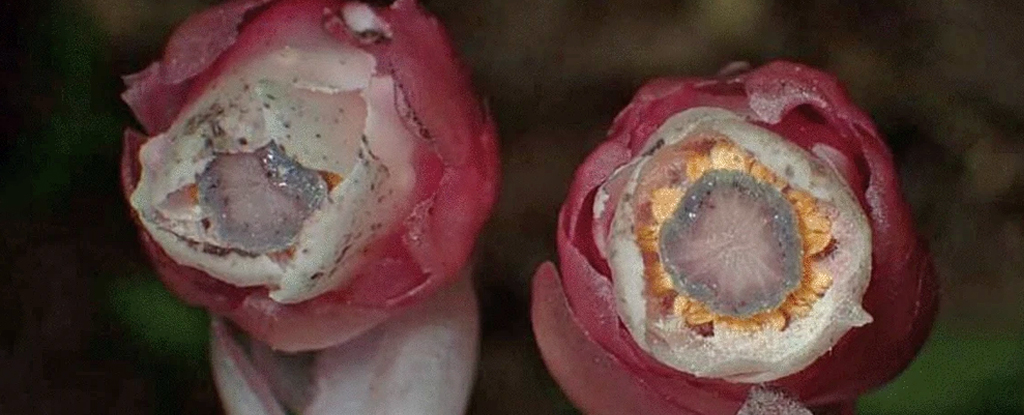Shrouded in the shadows of enchanting Asiatic forests, strange growths peer out from among the foliage like the ghosts of long-dead flowers.
The plant’s foliage lacks the green pigment, having abandoned photosynthesis in favor of an alternative source of nutrients on the forest floor, stolen by fungi that many other plants consider friends – the Symbiotic mycorrhiza which connect most forest plants to a wood wide net.
Widespread in East and Southeast Asia, from the Himalayas to Japan, Monotropastrum modest was thought to be a single species. Now researchers from Japan and Taiwan have discovered a pink species believed to be a distinct species, which they named Monotropastrum kirishimense.
Wood wide webs—incredible networks of fungi and plant roots that span entire forests—act as highways for nutrient delivery as well as wires for transmitting information between plants electric and chemical signals. These connections help strengthen a forest as a whole by reallocating resources from nutrient-poor to nutrient-rich areas of the network. They also allow plants warn each other of predators and even help protects them from drought.
In exchange for these services, plants pay their fungal allies with a portion of the hydrocarbons they produce through photosynthesis.
but monotropastrum betrays this mutual relationship by stealing all of the nutrients from the fungi and offering no photosynthetic products to the network in return – making them part of a very selective mycoheterotrophic club.
The most striking feature of the newly described Japanese variant is its blushing pink petals and sepals, but there are other differences, the researchers note.
Unlike her cousin M. humble, the roots of the newly discovered plant barely protrude from the ground. They are also more connected to you Russula line of mycorrhizae, whereas M. humble favors a very different type of fungus.
And though they grow side by side M. kirishimenses Flowering time does not overlap with that of M. humble, which flowers 40 days after the better-known species. This study of these interactions in the life cycle and between wildlife and physical forces on Earth, such as seasons, is called phenology.
“Our multifaceted evidence leads us to conclude that this taxon is morphologically, phenologically, phylogenetically and ecologically diverse and should therefore be recognized as a distinct species,” said Kobe University ecologist Kenji Suetsugu and colleagues close in their work.
“Our study presents the exciting possibility of a host moving in M. kirishimenseto a specific Russula Descent, triggered ecological speciation.”
Their different flowering times provide for the common main pollinator, the bumblebee Bombos diversuscannot inadvertently give one species the pollen of the other, thus preventing hybridization.
Many of the The world’s forests are under threat and how monotropastrum Species rely on old growth forests, these strange plants are also threatened with extinction. M. kirishimense is rare and researchers suspect it is likely endangered.
The new system was described in Journal of Plant Research.





